Saturday, 7am. A grey, rainy sky encourages a lie-in. But no such rest is to be countenanced, for today I will be foraging. This is a first for me - I am more used to scouring shelves for packaged food.
The quest starts at 9am at Tudor House Hotel in Clearwell, where we meet forager Raoul van Den Broucke, our expert guide for the morning. Raoul is Belgian – “someone has to be,” he quips – and grew up up on a farm, where his father would test him on identifying the crops at their very earliest stages. In adulthood, he exported ceps (mushrooms) from Portugal and before moving to the Forest of Dean, where he began supplying hotels and restaurants with produce gathered nearby. Raoul promises that we will find at least five edible items on our hunt, or our money back. He’s utterly sanguine about the likelihood of this, and we commence a quest that takes in housing estates, road verges, woodland and fields.
1. Wild fennel
Raoul the Raconteur, as I soon dub him, is an excellent companion, full of interesting anecdotes and extraordinary tales. Our first stop is no further than the hotel car park, where, on a grassy bank, hides in broad daylight wild fennel, feathery and light, something I’ve seen often but never thought twice about about tasting. On nibbling it, the flavor is familiar and delicious - liquorice.
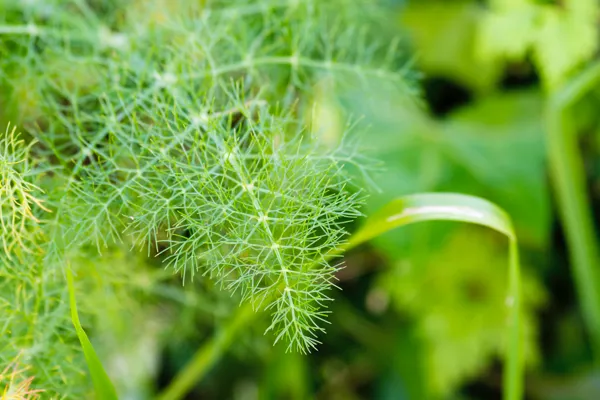
Wild fennel: A great herb for seasoning, it can be chopped finely and added to fish dished, potatos and salad; or just add hot water to make a tasty restorative tea.
2. Wild onion
The next stop is a housing estate in Coleford, ostensibly an unlikely place for edible treasures. But along the roadside verges are patches of longer grass-like strands that jut out at arbitrary points. Later in summer, these will be obscured by the long grass, but at this time of year they stand taller above the surrounding grass with a distinctively bluer hue of green. This, Raoul informs us, is wild onion. Having sampled a few strands, I can confirm that this is indeed a very oniony plant. Kiss-chase, anyone?
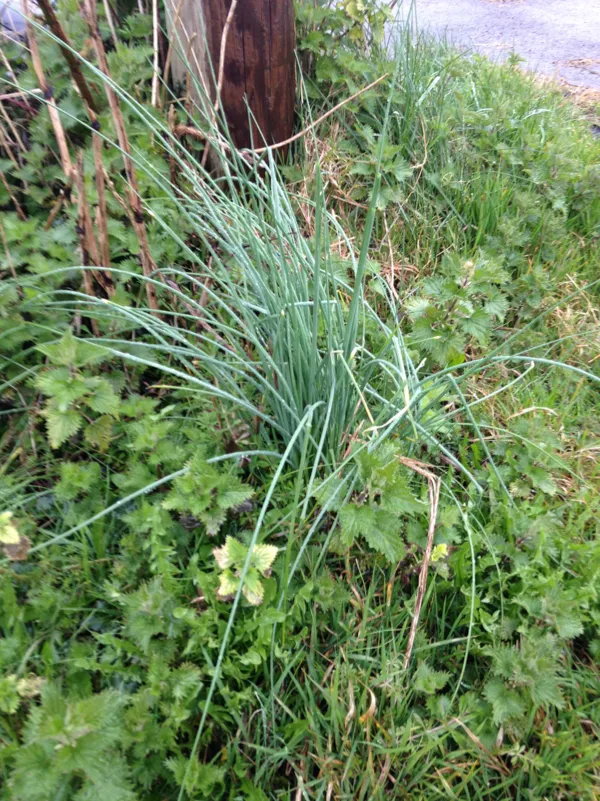
Wild onion: an unprepossessing plant masquerading as grass. Excellent for salads and seasoning.
3. Wild hops
From our wild onion odyssey we travel to the pretty village of Staunton and along a winding lane lined with another palatable plant – wild hops. Lurking at the base of the hedgerow, immersed in nettles, are the shoots of this spiky and slightly unfriendly-looking vegetable. We’re after the tip, so we count down one, two from the head to snap them off beneath the second set of leaves. Wild hops isn’t tasty raw, the shoots make a fine dish when cooked and, in Belgium and Holland, can commmand prices of up to £1,000 euros per kilo, making it the most expensive vegetable in the world. I've finally hit the jackpot.
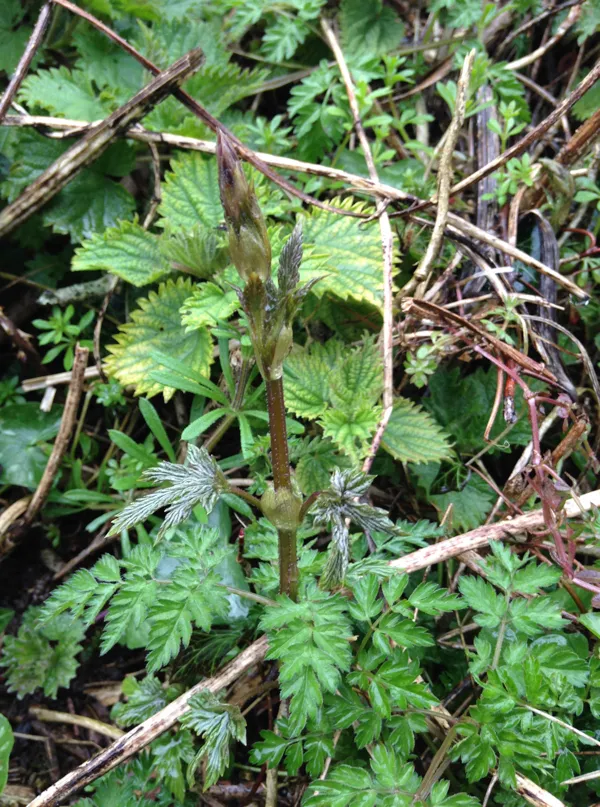
Wild hops: the shoots grow between March and April
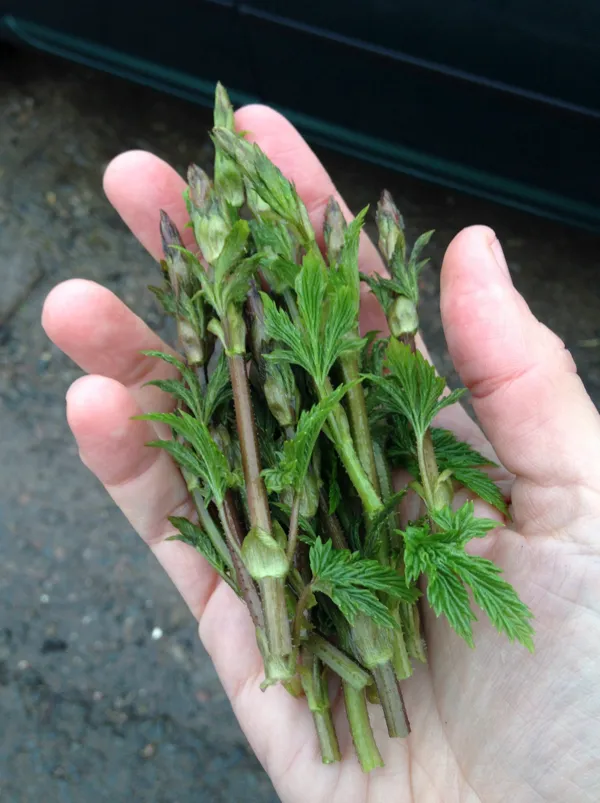
Wild hop shoots: Snap off below the tip and lightly fry with olive oil and rock salt for a delicious dish
4. Turkey tail mushroom
From Newland, we enter a cemetery to admire a lime tree, the blossom and young leaves of which can be used to make a tea that is helpful in soothing nerves - Raoul recalls his mother making it whenever he and his brother fought, to calm them down - and pass a patch of delicate yellow primroses, which have a light flavor ideal for salads. From here begins an ascent as we wade our way up an extremely muddy path. Protuding on a damp log is the turkey tail mushroom - not especially edible, as it is tough and leathery, but used by some to make a medicinal tea.
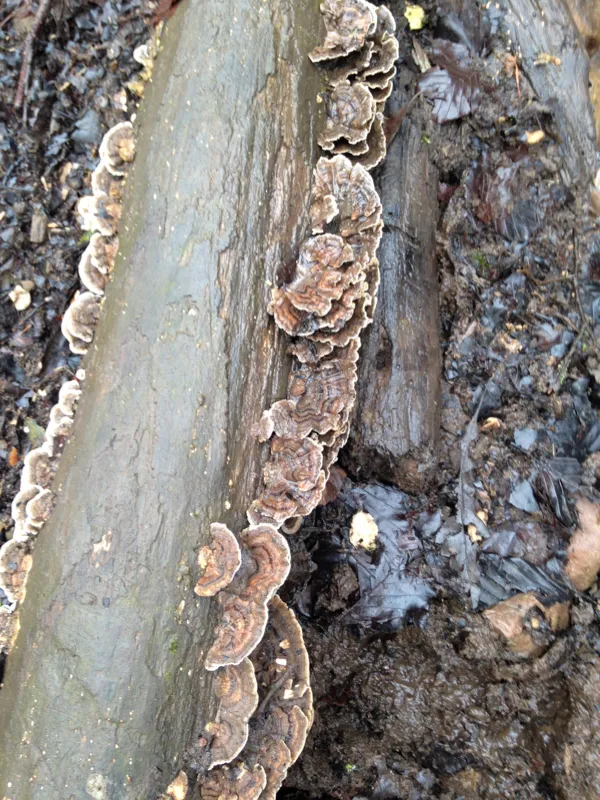
Turkey tail mushroom: aptly named and rather unappetising
5. Velvet shank mushroom
Another mushroom that makes an appearance in the damp, shadowy woodland is the velvet shank mushroom. Despite its alarmingly shiny orange tone, it is in fact a friendly edible funghi that grows year round, and as such is a foraging favourite. With a firm texture, it works well in stews and casseroles.
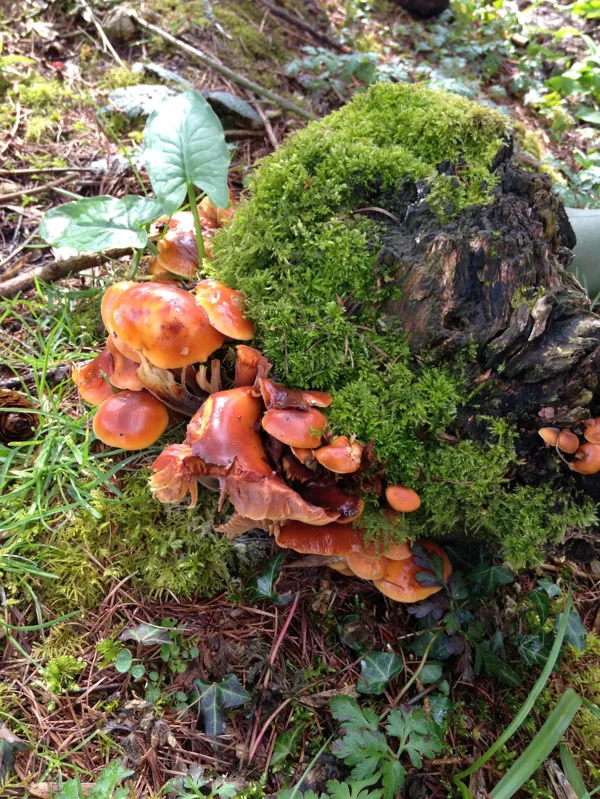
Velvet shank mushroom: the lurid orange may suggest a warning sign, but it is in fact another edible treasure
By now, the sky has stopped dampening our escapade and the sun is beginning to beam with pleasure – perfectly timed to present a spectacular view over the pastures and Newland village. These fields are often full of St George’s mushrooms, but this year they have yet to make an appearance. Mushrooms are flighty in this regard, it all depends on the rain and the humidity of the season.
6. Wild garlic
Our wander takes us past a small woodland bursting with bluebells and then, suddenly carpeting the banks, is wild garlic. The sight is impressive, a sea of lustrous green, and the flavor delightful and potent. Wild garlic can be used in many ways from pesto to flatbread, to scrambled eggs or tortilla. As we discuss making pesto with it, and how many nuts can be substituted for pine nuts (walnuts are a good choice), Raoul points out that some use can be made of the beautiful menace that is Himalayan Balsam – its seeds offer a fine substitute to pine nuts. The seedpods contain black or white seeds, but it’s the white ones you want – making an ideal, free and abundant alternative to pine nuts, as the invasive Himalyan Balsam is in plentiful supply across the countryside.
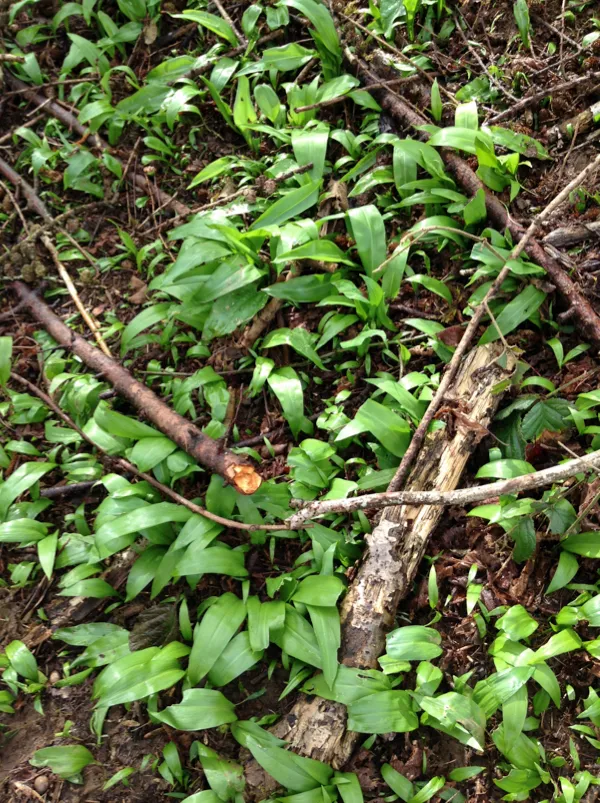
Also known as ramsons, wild garlic (allium ursinum) is found in damp soils in woods
7. Hairy bittercress
The last discovery we make is perhaps the most widely overlooked. As we scan the banks of another lane, Raoul directs our attention to a very common-looking weed, one that most of us have pulled up from gardens and plant pots. On tasting its leaves, the peppery flavour is recognisable - watercress. This is hairy bittercress, and is best served fresh in salads and sandwiches.
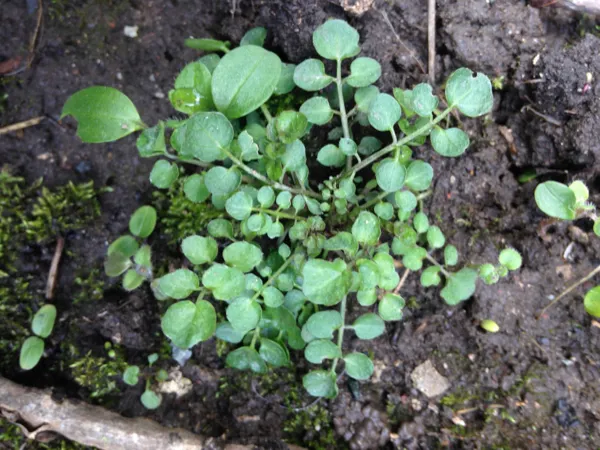
Despite the unflattering name, hairy bittercress tastes like a cross between watercress and rocket.
By noon, it's time for a celebratory drink at The Ostrich in Newland, where we sample the wild hops cooked in olive oil and sprinkled with rock salt. Admittedly, I am now ravenous with hunger, but this dish is just delectable, a melt-in-the-mouth cross between asparagus and kale, and I have to stop myself from elbowing everyone else out the way to scoff the lot.
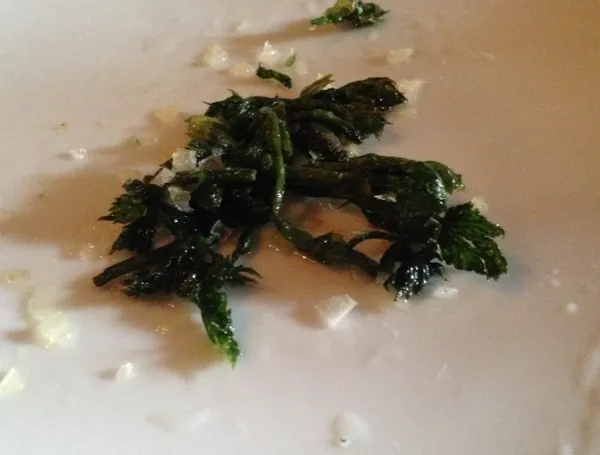
Hop shoots are mouthwatering when simply cooked in olive oil with rock salt. This was all that was left before I remembered to take a photograph. They're that good.
There’s a feast on your doorstep if you look closely enough, and it’s one of the most exciting ways to find your food that I’ve encountered. Supermarkets, eat your heart out. I'll be hunting around the grassy verges from now on.
To attend a morning's foraging course with Raoul, visit www.tudorfarmhousehotel.co.uk/foraging-trips/
